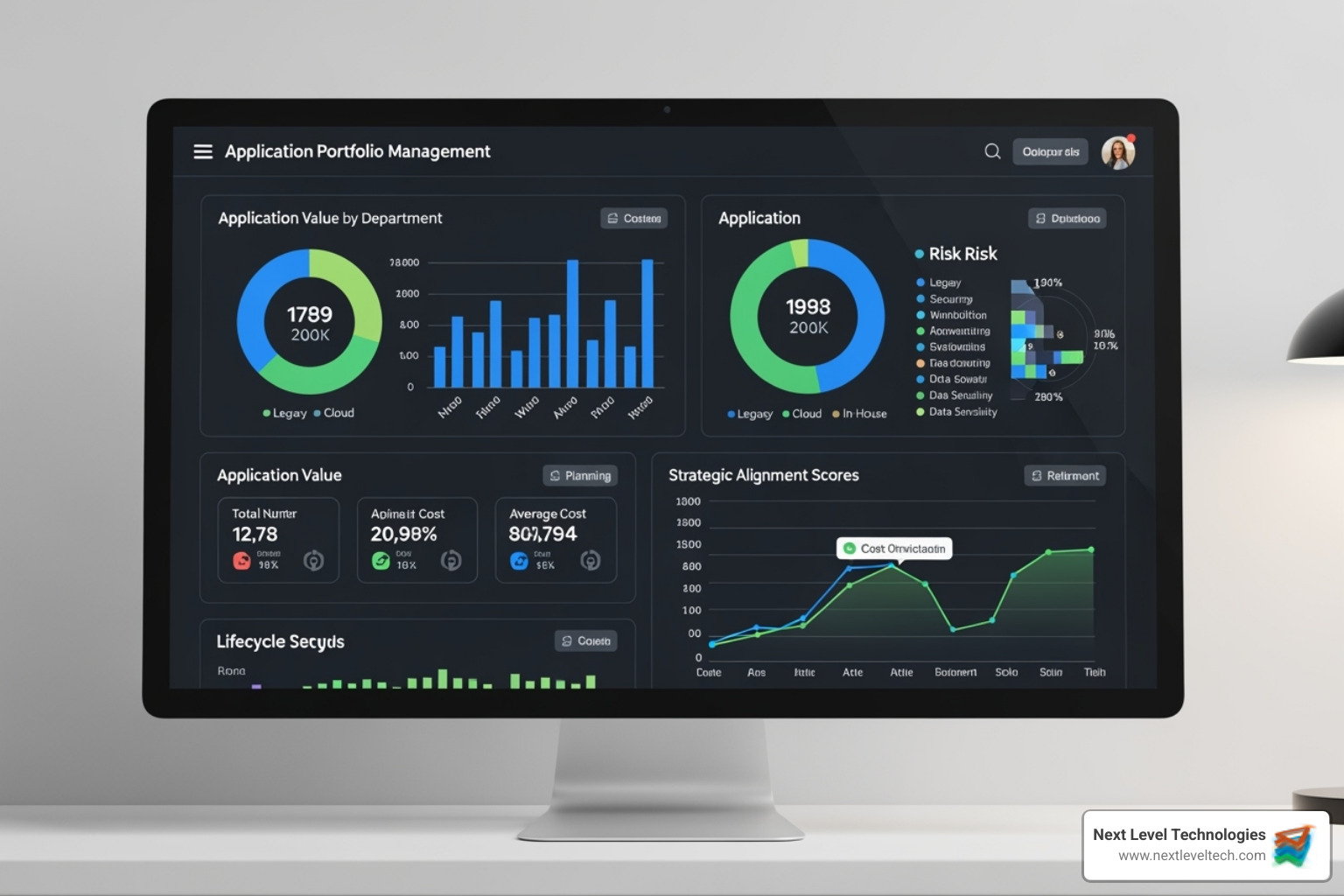Backup and Recovery Solutions: The Best Picks for 2025
October 11, 2024

Master it application portfolio management. Optimize IT costs, reduce complexity, and align strategy for business growth.
December 4, 2025

Safeguard your business. Master secure data access with expert strategies, modern tech, and training to protect critical data.
December 3, 2025

Learn basic computer hardware and networking essentials. Discover components, connections, and how your digital world operates. Start here!
December 2, 2025
October 11, 2024
Backup and recovery solutions are vital for safeguarding an organization's digital assets. In our increasingly data-driven world, having a solid plan for data protection isn't a luxury—it's a necessity. Here's what you need to know immediately:
For mid-sized businesses, managing data safely and efficiently is crucial to prevent downtime and maintain performance. From full backups to the use of cloud services, choosing the right strategy can protect against data loss and improve recovery times. Enterprise backup solutions offer a comprehensive approach that not only protects but also improves business continuity.
Understanding these solutions helps ensure your company's vital systems remain secure, operable, and compliant with stringent regulations. The key lies not just in backing up data but also in having a clear recovery process when mishaps occur.

Backup and recovery solutions are essential for protecting an organization's data. Let's break down what these solutions entail and why they're crucial for your business.
A backup is a copy of your organization's valuable data, stored securely to prevent loss. This data can include anything from customer information to critical business applications. The primary goal is to have a reliable copy available if the original data becomes inaccessible due to hardware failures, cyber-attacks, or human errors.
The recovery process is about restoring your data from these backups. Imagine there's a sudden system crash—your business shouldn't grind to a halt. With an effective recovery process, you can quickly restore your data, minimizing downtime and getting back to business as usual.
Here's a simple breakdown of how recovery works:
Preventing data loss is a proactive approach to data protection. It's about creating strategies that reduce the risk of data becoming inaccessible or corrupted. While backups are a reactive solution, data loss prevention focuses on minimizing the chance of needing those backups in the first place.
Here are a few strategies for effective data loss prevention:

By understanding and implementing these backup and recovery solutions, businesses can safeguard their data against unforeseen events, ensuring continuity and reliability. This isn't just about having a backup—it's about having a plan that ensures your data is always protected and recoverable.
When it comes to backup and recovery solutions, understanding the different strategies is crucial. Each method has its own strengths and is suited for different scenarios. Let's explore the three main types: full backup, incremental backup, and differential backup.
A full backup is exactly what it sounds like—a complete copy of all your data. This method ensures you have a comprehensive snapshot of your entire dataset at a specific point in time.

An incremental backup only saves the data that has changed since the last backup, whether that was a full or another incremental backup.
A differential backup captures all changes made since the last full backup. This means each differential backup grows larger until the next full backup is performed.
Each backup strategy has its place, and choosing the right one depends on your organization's needs, resources, and data recovery objectives. A mix of these strategies can often provide the best balance between data protection and resource efficiency.
When considering backup and recovery solutions, focusing on key features like automation, instant recovery, and data security can make all the difference.
Automation is a game-changer. Imagine your backups running smoothly without you having to lift a finger. Automated backup solutions schedule and execute backups without manual intervention. This ensures that your data is consistently protected, reducing the risk of human error and freeing up your IT team for other tasks.
Why it matters:
Instant recovery is like having a magic wand for your data. When disaster strikes, the ability to recover data instantly is crucial. This feature ensures minimal downtime and keeps your business running smoothly.
Why it matters:
Data security is non-negotiable. Effective backup and recovery solutions must include robust security measures to protect your data from unauthorized access, corruption, or loss.
Why it matters:
By prioritizing automation, instant recovery, and data security, businesses can ensure their backup and recovery solutions are both effective and efficient. These features not only protect your data but also improve overall business resilience.
Implementing backup and recovery solutions offers several compelling benefits that can significantly improve your business operations. Let's explore some of the top advantages:
Downtime can be a business killer. Every minute your systems are down can mean lost revenue and unhappy customers. With effective backup and recovery solutions, you can slash downtime to a minimum.
How it helps:
Running a business is expensive, and unnecessary costs can quickly add up. Backup and recovery solutions can help you save money in the long run.
How it helps:
Your data is one of your most valuable assets. Ensuring its integrity is crucial for operational success and compliance.
How it helps:
By reducing downtime, enhancing cost efficiency, and ensuring data integrity, implementing backup and recovery solutions is a strategic move that can protect and propel your business forward.
Backup and recovery solutions are systems designed to create copies of your data and store them securely. These solutions ensure you can quickly restore your data if it's lost or corrupted.
Data Copies and Storage:
Why it matters: By having these solutions in place, businesses can prevent data loss from disrupting operations. They ensure that even if something goes wrong, there's a way to recover vital information.
Choosing the best backup solution depends on your specific needs, but simplicity and reliability are key.
Cloud Services and Simplicity:
Pro Tip: Cloud-based solutions can eliminate the need for complex on-premises infrastructure, making them a popular choice for many businesses.
A backup and recovery strategy is a plan for how you'll protect and restore your data. It's about being prepared for the unexpected.
Database Recreation and Data Protection:
Key takeaway: A well-defined strategy outlines how you'll back up data, where it will be stored, and the steps for recovery. It’s crucial for maintaining business continuity and minimizing downtime during disruptions.
By understanding and implementing these strategies, businesses can safeguard their data and ensure smooth operations, even when the unexpected happens.
At Next Level Technologies, we understand that safeguarding your data is crucial for maintaining smooth business operations. Our comprehensive IT solutions are designed to address the unique needs of businesses, ensuring that you have robust backup and recovery solutions in place.
Managed IT Services: We offer custom managed IT services that prioritize data protection and recovery. Our team provides proactive monitoring, regular audits, and customized strategies to keep your data secure and your systems running efficiently.
Why Choose Us?
By partnering with us, you can focus on what you do best—running your business—while we handle the complexities of IT management and data protection. Find how our managed IT services can help your business thrive by visiting our Managed IT Services and IT Support page.
Take the next step toward securing your data with Next Level Technologies.
Master it application portfolio management. Optimize IT costs, reduce complexity, and align strategy for business growth.
December 4, 2025
Safeguard your business. Master secure data access with expert strategies, modern tech, and training to protect critical data.
December 3, 2025
Next Level Technologies was founded to provide a better alternative to traditional computer repair and ‘break/fix’ services. Headquartered in Columbus, Ohio since 2009, the company has been helping it’s clients transform their organizations through smart, efficient, and surprisingly cost-effective IT solutions.
